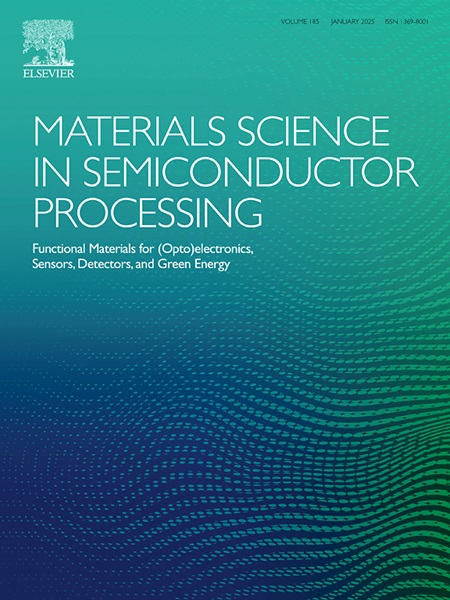场致相变对HZO矫顽力电压和极化的影响
IF 4.2
3区 工程技术
Q2 ENGINEERING, ELECTRICAL & ELECTRONIC
引用次数: 0
摘要
我们研究了HfxZr1-xO2 (HZO)的可调谐铁电特性,特别是通过控制循环电压来研究矫顽力电压(VC)和残余极化(Pr)。研究结果揭示了铁电性质与铁电相比例之间的重要关系。铁电相和非铁电相之间的相互作用在形成整体铁电行为中起着重要作用。通过利用场致相变,HZO的性能可以得到很好的调整,这为需要低工作电压和优化极化开关的应用提供了关键的见解。这些结果为开发高性能、可靠的铁电器件铺平了道路。本文章由计算机程序翻译,如有差异,请以英文原文为准。

Tunable coercive voltage and polarization of HZO through field-induced phase transitions
We explore the tunable ferroelectric properties of HfxZr1-xO2 (HZO), particularly focusing on coercive voltage (VC) and remnant polarization (Pr) through controlled cycling voltage. The findings reveal a crucial relationship between the ferroelectric properties and the proportion of the ferroelectric phase. The interaction between the ferroelectric and non-ferroelectric phases played a significant role in shaping the overall ferroelectric behavior. By leveraging the field-induced phase transitions, HZO properties could be finely tuned, which provides key insights for applications requiring low operating voltages and optimized polarization switching. These results pave the way for the development of high-performance and reliable ferroelectric devices.
求助全文
通过发布文献求助,成功后即可免费获取论文全文。
去求助
来源期刊

Materials Science in Semiconductor Processing
工程技术-材料科学:综合
CiteScore
8.00
自引率
4.90%
发文量
780
审稿时长
42 days
期刊介绍:
Materials Science in Semiconductor Processing provides a unique forum for the discussion of novel processing, applications and theoretical studies of functional materials and devices for (opto)electronics, sensors, detectors, biotechnology and green energy.
Each issue will aim to provide a snapshot of current insights, new achievements, breakthroughs and future trends in such diverse fields as microelectronics, energy conversion and storage, communications, biotechnology, (photo)catalysis, nano- and thin-film technology, hybrid and composite materials, chemical processing, vapor-phase deposition, device fabrication, and modelling, which are the backbone of advanced semiconductor processing and applications.
Coverage will include: advanced lithography for submicron devices; etching and related topics; ion implantation; damage evolution and related issues; plasma and thermal CVD; rapid thermal processing; advanced metallization and interconnect schemes; thin dielectric layers, oxidation; sol-gel processing; chemical bath and (electro)chemical deposition; compound semiconductor processing; new non-oxide materials and their applications; (macro)molecular and hybrid materials; molecular dynamics, ab-initio methods, Monte Carlo, etc.; new materials and processes for discrete and integrated circuits; magnetic materials and spintronics; heterostructures and quantum devices; engineering of the electrical and optical properties of semiconductors; crystal growth mechanisms; reliability, defect density, intrinsic impurities and defects.
 求助内容:
求助内容: 应助结果提醒方式:
应助结果提醒方式:


